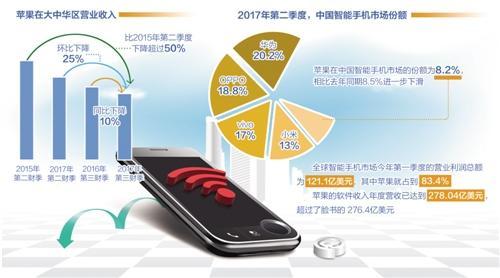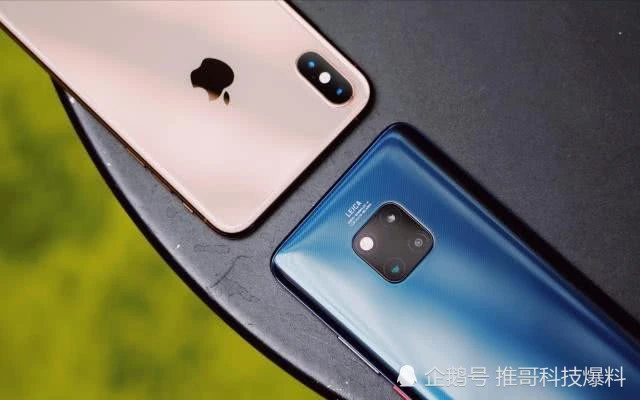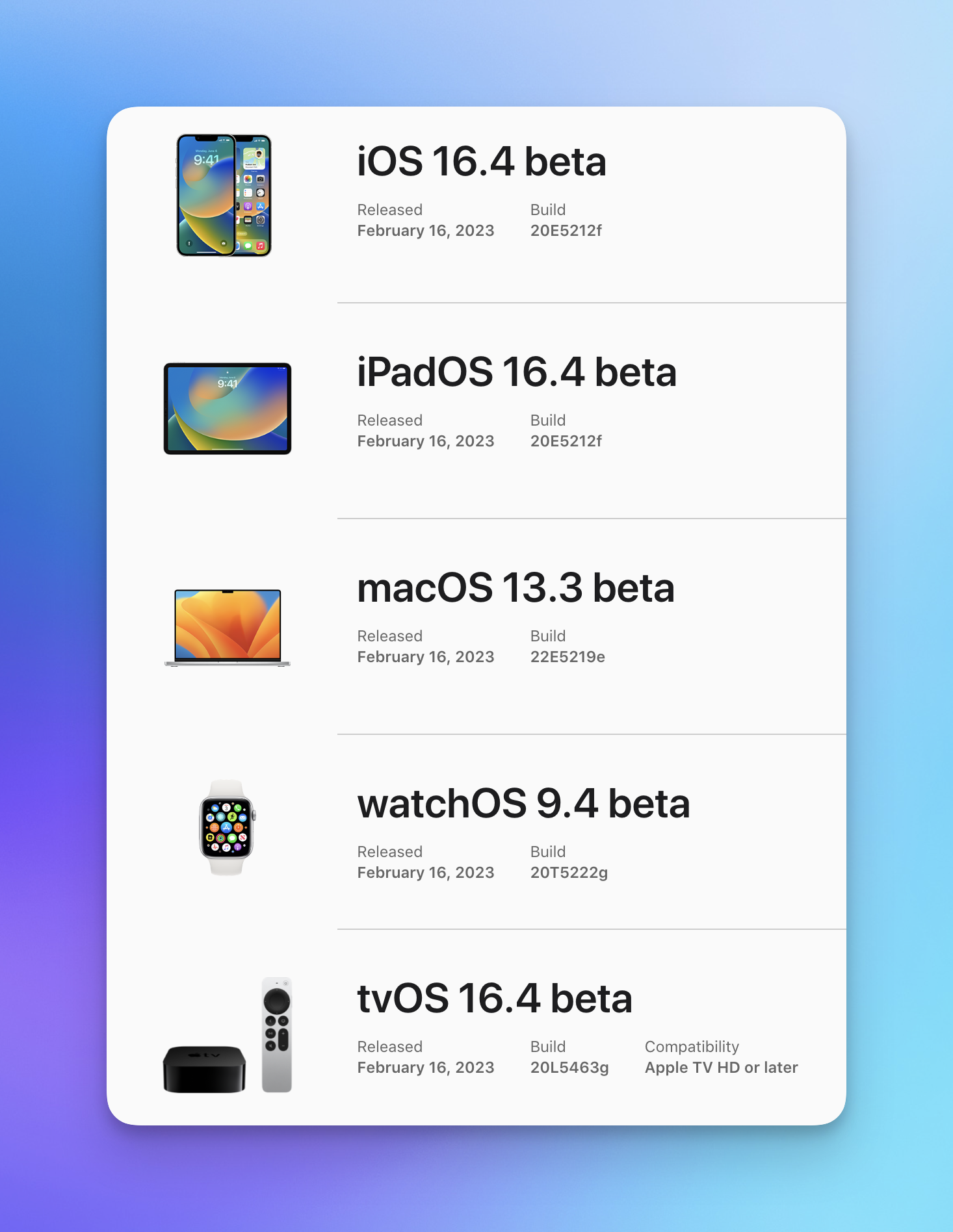Apple's new products are coming, and domestic mobile phones are not showing weakness

In recent years, competition in the smartphone market at home and abroad has become increasingly fierce. The market share of Apple mobile phones has gradually declined, while domestic brands such as Huawei, Xiaomi, and vivo have risen rapidly. At the same time, Apple has an absolute advantage in profits with its closed-loop ecology and software sharing.From the perspective of future development, domestic mobile phones can only occupy a dominant position in market competition if they make efforts in multiple fields such as technology, channels, and ecology at the same time
On September 12, western time in the United States, Apple released three new products in one go, iPhone 8, iPhone 8 Plus and iPhone X to celebrate the 10th anniversary of Apple's entry into the smartphone market. However, just one day before the Apple conference, Xiaomi released the new mobile phone MIX2, which features the same "full screen" as the iPhone X. Huawei earlier released the artificial intelligence chip "Kirin 970" that rivals Apple, and announced that the next-generation flagship mobile phone Mate10 will be released in mid-October.
Apple once led the mobile phone industry into the era of smartphones, and 10 years later, Apple’s new products are coming again. What new products and technologies will China-made mobile phones respond to Apple’s challenges this time?
beyond modesty or high profile
Lei Jun, chairman of Xiaomi Technology, told the reporter of Economic Daily that in order to avoid a "collision" with Apple's new product release, the release of Xiaomi MIX 2 was temporarily brought forward by one day. "But we are very confident in the product, it's just a matter of influence."
Huawei's attitude is more tit-for-tat. After the Apple press conference, Huawei's terminal business directly tweeted on the social network: "Disappointed? We have prepared an unprecedented surprise. On October 16, Huawei Mate10." There is also a video released together, and Apple gradually becomes Apple core, its significance is obvious.
Regardless of whether the domestic mobile phone manufacturers are modest or high-profile, the downward trend of Apple's market share in China is quite obvious. From a vertical point of view, data from third-party consulting companies show that Apple’s sales in Greater China have declined for six consecutive quarters; in the third fiscal quarter of 2017, revenue in Greater China fell by 10% year-on-year and 25% month-on-month. Compared with the second quarter of 2015, it fell by more than 50%. From a horizontal perspective, in the second quarter of 2017, Huawei, OPPO, vivo and Xiaomi ranked the top four in the Chinese market, and the market shares of the four manufacturers reached 20.2%, 18.8%, 17% and 13% respectively, with an average year-on-year There is growth. The total share of the four companies in the Chinese market has reached 69%, and Apple's share in the Chinese smartphone market is only 8.2%, which is a further decline from 8.5% in the same period last year.
Can the release of Apple's new products curb this trend? Xiang Ligang, an expert in the communication industry and president of Feixiang.com, said frankly: "The Apple released this time lacks overall product innovation. Several major technologies have been used by other manufacturers." Gu Amo, a well-known short video blogger, is talking about Apple. When it came to new products, it even said jokingly after each function: "You are not allowed to say that others already have this design, the important thing is that Apple finally has it!" Indeed, after the start of Apple's new product launch conference, At the beginning, Apple’s stock price once rose to $163.96, but with the release of the mobile phone, it began to fall, and finally closed at $160.86, down 0.40%, which somewhat reflects the attitude of the capital market.
Technology is "overtaking"
Since the iPhone 8 is too similar to the iPhone 7, the market has focused more on the iPhone X this time, and Apple CEO Tim Cook called it the "biggest leap" in the history of the iPhone. However, Apple is no longer a pioneer even when it comes to the technical highlights of the iPhone X.
The biggest selling point of the iPhone X is the "full screen", that is, the proportion of the screen on the phone is as large as possible. However, as early as October 25 last year, Xiaomi released its concept mobile phone Mi MIX, becoming the first mobile phone among domestic smartphone manufacturers to use a full screen. The newly released MIX2 is called "full screen 2.0". Vivo, Gionee and Huawei also announced that they will release their new full-screen mobile phones successively from late September to mid-October. Liao Yilong, general manager of Shenzhen Jiujiuben Automatic Equipment Co., Ltd., a mobile phone panel cutting company, said: "At present, nearly 10 customers are negotiating cooperation with us, and it is expected that the application of full screens on mobile phones will have explosive growth." President Ni Xudong said: "The industry's pursuit of a full screen comes from the fact that a full screen can accommodate a larger mobile phone screen in a limited body space, making it easier for consumers to use while moving. It will gradually become the centerpiece of mobile phones. standard."
Another selling point of the iPhone X is to change fingerprint recognition to facial recognition. Tim Cook claims that the error rate of facial recognition is only one in a million compared to the error rate of one in 50,000 for fingerprint recognition. However, Mi Note3 and Huawei Honor Magic released before iPhone X also support intelligent face recognition. Wu Wenhao, Vice President of Megvii Cloud Business, which provides Xiaomi with the underlying technology of face recognition, said that in the future, the application of face recognition by domestic mobile phone manufacturers will not stop at unlocking. Megvii is building a set of intelligent visual solutions that adapt to the entire mobile phone platform Solutions to address the needs of different mobile phone manufacturers in image enhancement, camera enhancement, intelligent image and video processing.

In terms of chips, Huawei's self-developed "Kirin 970" is also powerful. Yu Chengdong, CEO of Huawei's consumer business, said that the "Kirin 970" uses a 10-nanometer process, and the number of transistors on the chip has reached 5.5 billion, which improves performance by 20% and reduces power consumption by 50%. In terms of quantity alone, the number of transistors in the Apple A11 processor on the iPhone X is only 4.3 billion, and Huawei has a leading edge.
"Whether in terms of mobile phone design or application technology, the iPhone X, which has high expectations, is half a beat slower than domestic smartphones. In the context of global interconnection, new technology trends and research and development cycles are shortening. In terms of integration of new technologies and applications such as intelligence, Internet of Things, virtual reality, and augmented reality, domestic smartphones are almost on the same starting line as Apple and Samsung. In many cases, some new technologies and applications are already the first to be used on domestic mobile phones , and then it will be used for reference by Apple and Samsung.” said Li Junhui, a special researcher at the Intellectual Property Research Center of China University of Political Science and Law.
Once the technology keeps pace, the price advantage of domestic mobile phones will become more obvious. For example, the domestic starting price of iPhone X is 8388 yuan, while the starting price of Xiaomi MIX2 is only 3299 yuan. Sun Yanbiao, dean of the First Mobile Research Institute, a market research organization, said: "The iPhone X has such a high price, but there is not much difference in performance. Mobile phone consumers are gradually becoming more mature and rational, which makes other mobile phones continue to compete. Apple's market share."
The ecological chain still needs to catch up
Despite the shortcomings in market share and technological innovation, Apple still leads the way in profits. According to data from third-party companies, the total operating profit of the global smartphone market in the first quarter of this year was US$12.11 billion, of which Apple accounted for 83.4%. In contrast, the profits of domestic mobile phones with huge shipments are not high.
Apple's profits come not only from hardware that is much higher than the industry average, but also from software based on the Apple ecosystem. Apple's software revenue has reached 27.804 billion U.S. dollars in annual revenue through Apple Music, Video and Apple Store and developers. Even more than Facebook's $27.64 billion. In addition, this time Apple's new camera supports augmented reality, which is seen as an opportunity for the explosion of augmented reality applications, especially games, and Apple will share more profits. According to a report from investment bank Morgan Stanley, augmented reality technology is expected to bring Apple $9 billion in software and service revenue in the next three years.
Compared with Apple, it is difficult for domestic mobile phone manufacturers based on the open Android system to monopolize software profits. The way they build their own ecology is usually to cooperate with different types of hardware. For example, there are more than 200 companies in the Xiaomi ecological chain, including TVs, boxes, routers, wireless doorbells, and smart desk lamps. Huawei has chosen to provide smart technology for more than 100 brands of home appliances including Skyworth, Changhong, and Haier.
In addition to vertical and horizontal alliances, the way for domestic manufacturers to gain more voice is to build more powerful channels than Apple. Vivo once revealed that its online stores across the country have exceeded 250,000, while Huawei and Xiaomi have chosen to integrate online and offline more closely. Before the "Chinese Valentine's Day" this year, Huawei has added 12 authorized experience stores, integrating online and offline, and at the same time developing towards a new direction of smart living halls, creating a life-oriented and scene-oriented shopping environment. Lei Jun led the team to inspect villages and towns to study Xiaomi's channel strategy in the low-tier market, forming the largest linkage between online and offline.

